
漢德百科全書 | 汉德百科全书
 Spain
Spain
 China
China
 Denmark
Denmark
 Netherlands
Netherlands

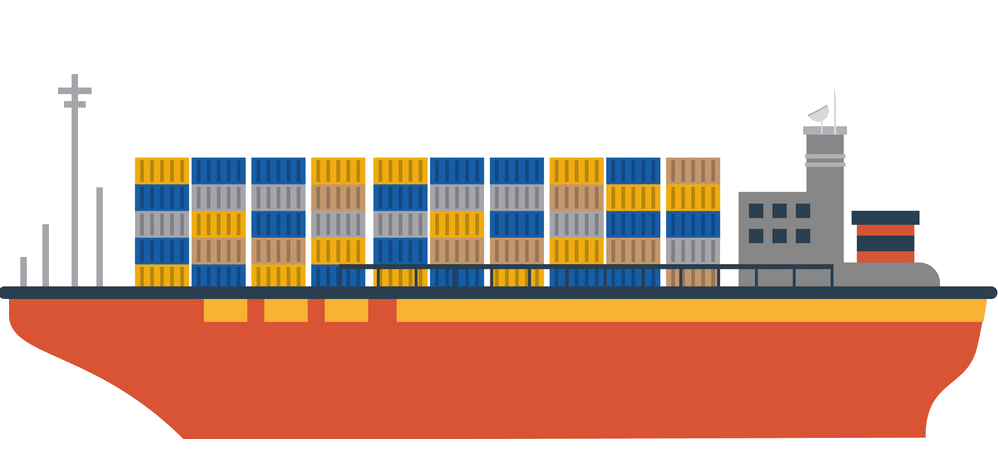 Ships and Nautics
Ships and Nautics
 Sweden
Sweden
 Spain
Spain

 Sport
Sport
 The Ocean Race
The Ocean Race
 Turkey
Turkey
 United Arab Emirates
United Arab Emirates

The Ocean Race (vormals Volvo Ocean Race, davor The Whitbread Round the World Race) ist eine seit 1973 alle vier und seit 2006 alle drei Jahre durchgeführte Segelregatta, die einmal um die ganze Welt verläuft. Die Regatta startet im Herbst in Europa, die weitere Route führt durch den Atlantik, umrundet Afrika am Kap der Guten Hoffnung, führt durch den Indischen Ozean über den Südpazifik und rund um Kap Horn nach Süd- und Nordamerika und von dort wieder zurück nach Europa. Aufgrund der Wind- und Wetterverhältnisse, vor allem im Südpazifik (Wellenhöhen von 30 m und Windgeschwindigkeiten von 110 km/h), gilt die Regatta als eine der härtesten Herausforderungen im Segelsport. Die Regatta wird in Etappen (englisch leg bzw. legs) durchgeführt. Insgesamt sind je nach Anzahl und Wahl der Etappenziele 24.000 Seemeilen (etwa 45.000 km) bis 45.000 Seemeilen (etwa 72.000 km) zurückzulegen.
环球帆船赛(前身为沃尔沃环球帆船赛,后改为惠特布莱德环球帆船赛)是一项帆船赛事,自 1973 年起每四年举办一次,自 2006 年起每三年举办一次,环游世界。帆船赛从秋季的欧洲开始,其余路线穿过大西洋,在好望角绕过非洲,穿过印度洋,横跨南太平洋,绕过合恩角到达南美洲和北美洲,然后从那里返回欧洲。由于风力和天气条件,尤其是南太平洋的风力和天气条件(浪高 30 米,风速 110 公里/小时),帆船赛被认为是帆船运动中最艰巨的挑战之一。帆船赛按赛段组织。根据赛段的数量和选择,总航程从 24,000 海里(约 45,000 公里)到 45,000 海里(约 72,000 公里)不等。
 Argentina
Argentina
 Australia
Australia
 Germany
Germany
 France
France
 Italy
Italy
 Croatia
Croatia
 Russia
Russia
 Sweden
Sweden
 Switzerland
Switzerland
 Serbia
Serbia
 Spain
Spain

 Sport
Sport

 Sport
Sport
 Tennis
Tennis
 South Africa
South Africa
 Czech Republic
Czech Republic
 United States
United States
 United Kingdom
United Kingdom

Nationen nach Anzahl der Siege und FinalteilnahmenRangLandSiegeFinal-
| Rang | Land | Siege | Final- niederlagen |
|---|---|---|---|
| 1. | 32 | 29 | |
| 2. | 28* | 19 | |
| 3. | 10 | 9 | |
| 4. | 10 | 8 | |
| 5. | 7 | 5 | |
| 6. | 6 | 4 | |
| 7. | 3 | 3 | |
| 8. | 3 | 2 | |
| 3** | 2 | ||
| 10. | 2 | 2 | |
| 11. | 1 | 6 | |
| 12. | 1 | 4 | |
| 13. | 1 | 1 | |
| 1 | 1 | ||
| 15. | 1 | 0 | |
| 16. | 0 | 3 | |
| 0 | 3 | ||
| 0 | 3 | ||
| 19. | 0 | 1 | |
| 0 | 1 | ||
| 0 | 1 | ||
| 0 | 1 | ||
| 0 | 1 |
* inkl. vier Siegen als Australasien
** inkl. eines Sieges als Tschechoslowakei
 *Mediterranean Sea
*Mediterranean Sea
 Egypt
Egypt
 Albania
Albania
 Algeria
Algeria
 Amber Road
Amber Road
 Bosnia Herzegovina
Bosnia Herzegovina
 France
France
 Gibraltar
Gibraltar
 Greece
Greece
 Israel
Israel
 Italy
Italy
 Croatia
Croatia
 Libanon
Libanon
 Libya
Libya
 Malta
Malta
 Malta
Malta
 Monaco
Monaco
 Montenegro
Montenegro
 Palestine
Palestine
 Slovenia
Slovenia
 Spain
Spain
 Syria
Syria
 Tunisia
Tunisia
 Turkey
Turkey
 Cyprus
Cyprus
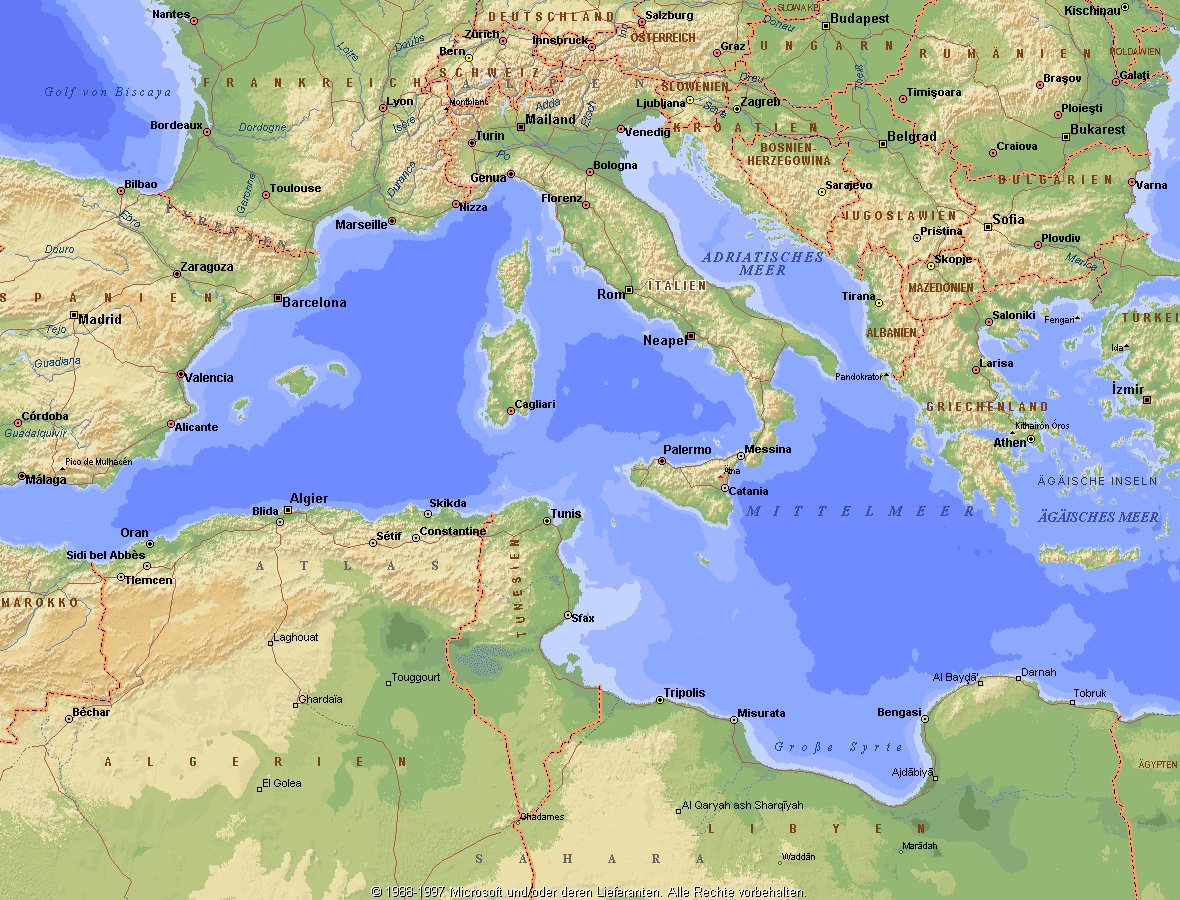
Das Mittelmeer (lateinisch Mare Mediterraneum,[1] deshalb deutsch auch Mittelländisches Meer, präzisierend Europäisches Mittelmeer, im Römischen Reich Mare Nostrum) ist ein Mittelmeer zwischen Europa, Afrika und Asien, ein Nebenmeer des Atlantischen Ozeans und, da es mit der Straße von Gibraltar nur eine sehr schmale Verbindung zum Atlantik besitzt, auch ein Binnenmeer. Im Arabischen und Türkischen wird es auch als „Weißes Meer“ (البحر الأبيض/al-baḥr al-abyaḍ bzw. türk. Akdeniz) bezeichnet.
Zusammen mit den darin liegenden Inseln und den küstennahen Regionen Südeuropas, Vorderasiens und Nordafrikas bildet das Mittelmeer den Mittelmeerraum, der ein eigenes Klima (mediterranes Klima) hat und von einer eigenen Flora und Fauna geprägt ist.
地中海(英文:Mediterranean),被北面的欧洲大陆、南面的非洲大陆以及东面的亚洲大陆包围着。东西长约4000千米,南北最宽处大约为1800千米,面积251.6万平方千米,是地球上最大的陆间海。地中海的平均深度是1500米,最深处为5267米。
地中海西部通过直布罗陀海峡与大西洋相接,东部通过土耳其海峡(达达尼尔海峡和博斯普鲁斯海峡、马尔马拉海)和黑海相连。19世纪时开通的苏伊士运河,接通了地中海与红海。地中海是世界上最古老的海之一[3],而其附属的大西洋却是年轻的海洋。地中海处在欧亚板块和非洲板块交界处,是世界最强地震带之一。地中海地区有维苏威火山、埃特纳火山。
地中海作为陆间海,风浪较小,加之沿岸海岸线曲折、岛屿众多,拥有许多天然良好的港口,成为沟通三个大陆的交通要道。这样的条件,使地中海从古代开始海上贸易就很繁盛,促进了古代古埃及文明、古希腊文明、罗马帝国等的发展。现在也是世界海上交通的重要地区之一。其沿岸的腓尼基人、克里特人、希腊人,以及后来的葡萄牙人和西班牙人都是航海业发达的民族。著名的航海家如哥伦布、达·伽马、麦哲伦等,都出自地中海沿岸的国家。
地中海沿岸夏季炎热干燥,冬季温暖湿润,被称作地中海性气候。植被,叶质坚硬,叶面有蜡质,根系深,有适应夏季干热气候的耐旱特征,属亚热带常绿硬叶林。这里光热充足,是欧洲主要的亚热带水果产区,盛产柑橘、无花果,和葡萄等,还有木本油料作物油橄榄。
地中海(ちちゅうかい、ラテン語: Mare Mediterraneum)は、北と東をユーラシア大陸、南をアフリカ大陸(両者で世界島)に囲まれた地中海盆地に位置する海である。面積は約3000平方キロメートル、平均水深は約1500メートル[2]。海洋学上の地中海の一つ。
地中海には、独立した呼称を持ついくつかの海域が含まれる(エーゲ海、アドリア海など)。地中海と接続する他の海としては、ジブラルタル海峡の西側に大西洋が、ダーダネルス海峡を経た北東にマルマラ海と黒海があり、南西はスエズ運河で紅海と結ばれている(「海域」「地理」で詳述)。
北岸の南ヨーロッパ、東岸の中近東、南岸の北アフリカは古代から往来が盛んで、「地中海世界」と総称されることもある[3]。
The Mediterranean Sea is a sea connected to the Atlantic Ocean, surrounded by the Mediterranean Basin and almost completely enclosed by land: on the north by Southern Europe and Anatolia, on the south by North Africa and on the east by the Levant. Although the sea is sometimes considered a part of the Atlantic Ocean, it is usually identified as a separate body of water. Geological evidence indicates that around 5.9 million years ago, the Mediterranean was cut off from the Atlantic and was partly or completely desiccated over a period of some 600,000 years, the Messinian salinity crisis, before being refilled by the Zanclean flood about 5.3 million years ago.
It covers an approximate area of 2.5 million km2 (965,000 sq mi), but its connection to the Atlantic (the Strait of Gibraltar) is only 14 km (8.7 mi) wide. The Strait of Gibraltar is a narrow strait that connects the Atlantic Ocean to the Mediterranean Sea and separates Gibraltar and Spain in Europe from Morocco in Africa. In oceanography, it is sometimes called the Eurafrican Mediterranean Sea or the European Mediterranean Sea to distinguish it from mediterranean seas elsewhere.[2][3]
The Mediterranean Sea has an average depth of 1,500 m (4,900 ft) and the deepest recorded point is 5,267 m (17,280 ft) in the Calypso Deep in the Ionian Sea. The sea is bordered on the north by Europe, the east by Asia, and in the south by Africa. It is located between latitudes 30° and 46° N and longitudes 6° W and 36° E. Its west-east length, from the Strait of Gibraltar to the Gulf of Iskenderun, on the southwestern coast of Turkey, is approximately 4,000 km (2,500 miles). The sea's average north-south length, from Croatia’s southern shore to Libya, is approximately 800 km (500 miles). The Mediterranean Sea, including the Sea of Marmara (connected by the Dardanelles to the Aegean Sea), has a surface area of approximately 2,510,000 square km (970,000 square miles).[4]
The sea was an important route for merchants and travellers of ancient times that allowed for trade and cultural exchange between emergent peoples of the region. The history of the Mediterranean region is crucial to understanding the origins and development of many modern societies.
The countries surrounding the Mediterranean in clockwise order are Spain, France, Monaco, Italy, Slovenia, Croatia, Bosnia and Herzegovina, Montenegro, Albania, Greece, Turkey, Syria, Lebanon, Israel, Egypt, Libya, Tunisia, Algeria, and Morocco; Malta and Cyprus are island countries in the sea. In addition, the Gaza Strip and the British Overseas Territories of Gibraltar and Akrotiri and Dhekelia have coastlines on the sea.
La mer Méditerranée (prononcé [me.di.tɛ.ʁa.ne]) est une mer intercontinentale presque entièrement fermée, bordée par les côtes d'Europe du sud, d’Afrique du Nord et d’Asie, depuis le détroit de Gibraltar à l'ouest aux entrées des Dardanelles et du canal de Suez à l'est. Elle s’étend sur une superficie d’environ 2,5 millions de kilomètres carrés. Son ouverture vers l’océan Atlantique par le détroit de Gibraltar est large de 14 kilomètres.
Elle doit son nom au fait qu’elle est littéralement une « mer au milieu des terres », en latin « mare medi terra »1.
Durant l’Antiquité, la Méditerranée était une importante voie de transports maritimes permettant l’échange commercial et culturel entre les peuples de la région — les cultures mésopotamiennes, égyptienne, perse, phénicienne, carthaginoise, berbère, grecque, arabe (conquête musulmane), ottomane, byzantine et romaine. L’histoire de la Méditerranée est importante dans l’origine et le développement de la civilisation occidentale.
Il mar Mediterraneo, detto brevemente Mediterraneo, è un mare intercontinentale situato tra Europa, Nordafrica e Asia occidentale connesso all'Oceano Atlantico. La sua superficie approssimativa è di 2,51 milioni di km² e ha uno sviluppo massimo lungo i paralleli di circa 3 700 km. La lunghezza totale delle sue coste è di 46 000 km, la profondità media si aggira sui 1 500 m, mentre quella massima è di 5 270 m presso le coste del Peloponneso. La salinità media si aggira dal 36,2 al 39 ‰.[2] La popolazione presente negli stati bagnati dalle sue acque ammonta a circa 450 milioni di persone.[2].
El mar Mediterráneo es uno de los mares del Atlántico. Está rodeado por la región mediterránea, comprendida entre Europa meridional, Asia Occidental y África septentrional. Fue testigo de la evolución de varias civilizaciones como los egipcios, los fenicios, hebreos, griegos, cartagineses, romanos, etc. Con aproximadamente 2,5 millones de km² y 3.860 km de longitud, es el segundo mar interior más grande del mundo, después del Caribe.1 Sus aguas, que bañan las tres penínsulas del sur de Europa (Ibérica, Itálica, Balcánica) y una de Asia (Anatolia), comunican con el océano Atlántico a través del estrecho de Gibraltar, con el mar Negro por los estrechos del Bósforo y de los Dardanelos y con el mar Rojo por el canal de Suez.2 Es el mar con las tasas más elevadas de hidrocarburos y contaminación del mundo.3
Средизе́мное мо́ре — межматериковое море, по происхождению представляющее собой глубоководную псевдоабиссальную внутришельфовую депрессию[1][2], связанную на западе с Атлантическим океаном Гибралтарским проливом[3].
В Средиземном море выделяют, как его составные части, моря: Адриатическое, Альборан, Балеарское, Ионическое, Кипрское, Критское, Левантийское, Ливийское, Лигурийское, Тирренское и Эгейское. В бассейн Средиземного моря также входят Мраморное, Чёрное и Азовское моря.
 *Mediterranean Sea
*Mediterranean Sea
 Albania
Albania

 Eat and Drink
Eat and Drink
 Greek cuisine
Greek cuisine

 Eat and Drink
Eat and Drink
 Portuguese cuisine
Portuguese cuisine

 Eat and Drink
Eat and Drink
 Spanish Kitchen
Spanish Kitchen

 Eat and Drink
Eat and Drink
 Turkish cuisine
Turkish cuisine
 Greece
Greece
 Israel
Israel
 Italy
Italy
 Croatia
Croatia
 Libanon
Libanon
 Malta
Malta
 Morocco
Morocco
 Portugal
Portugal
 Slovenia
Slovenia
 Spain
Spain
 Turkey
Turkey
 Cyprus
Cyprus
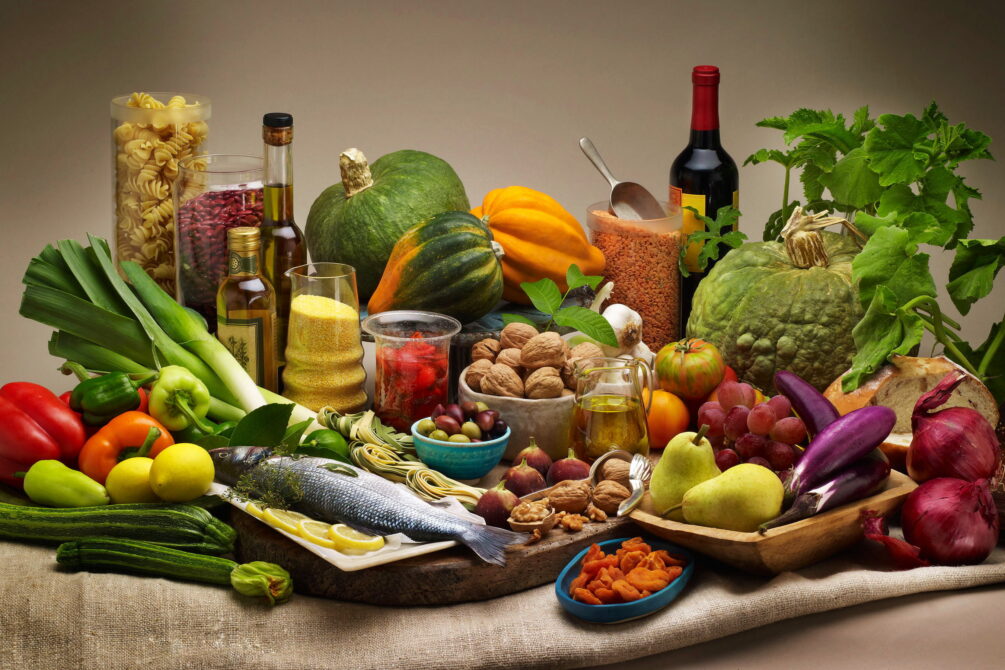
 Als Grundelemente der Landesküchen der Mittelmeerregion gelten: Olivenöl und Oliven frisches Gemüse wie Tomaten, Auberginen, Paprika, Zucchini Knoblauch, Lauch und Zwiebel Fisch und Meeresfrüchte Kräuter und Gewürze wie Thymian, Rosmarin, Koriander, Salbei, Fenchel, Kümmel, Anis, Oregano und Basilikum helles Brot, Nudeln und Reis in einigen Ländern regelmäßiger Rotweingenuss zum Essen.
Als Grundelemente der Landesküchen der Mittelmeerregion gelten: Olivenöl und Oliven frisches Gemüse wie Tomaten, Auberginen, Paprika, Zucchini Knoblauch, Lauch und Zwiebel Fisch und Meeresfrüchte Kräuter und Gewürze wie Thymian, Rosmarin, Koriander, Salbei, Fenchel, Kümmel, Anis, Oregano und Basilikum helles Brot, Nudeln und Reis in einigen Ländern regelmäßiger Rotweingenuss zum Essen.
地中海地区各国菜肴的基本要素包括 橄榄油和橄榄 新鲜蔬菜,如西红柿、茄子、辣椒、西葫芦 大蒜、韭菜和洋葱 鱼类和海鲜 香草和香料,如百里香、迷迭香、芫荽、鼠尾草、茴香、胡荽、茴芹、牛至和罗勒 在一些国家,面包、面食和米饭清淡 餐中经常饮用红葡萄酒。
 *Mediterranean Sea
*Mediterranean Sea
 Egypt
Egypt
 Albania
Albania
 Algeria
Algeria
 Amber Road
Amber Road
 Bosnia Herzegovina
Bosnia Herzegovina
 France
France
 Gibraltar
Gibraltar
 Greece
Greece
 Israel
Israel
 Italy
Italy
 Croatia
Croatia
 Libanon
Libanon
 Libya
Libya
 Malta
Malta
 Malta
Malta
 Monaco
Monaco
 Montenegro
Montenegro
 Palestine
Palestine
 Slovenia
Slovenia
 Spain
Spain
 Syria
Syria
 Tunisia
Tunisia
 Turkey
Turkey
 Cyprus
Cyprus

 *Mediterranean Sea
*Mediterranean Sea
 Albania
Albania
 Algeria
Algeria
 Bosnia Herzegovina
Bosnia Herzegovina

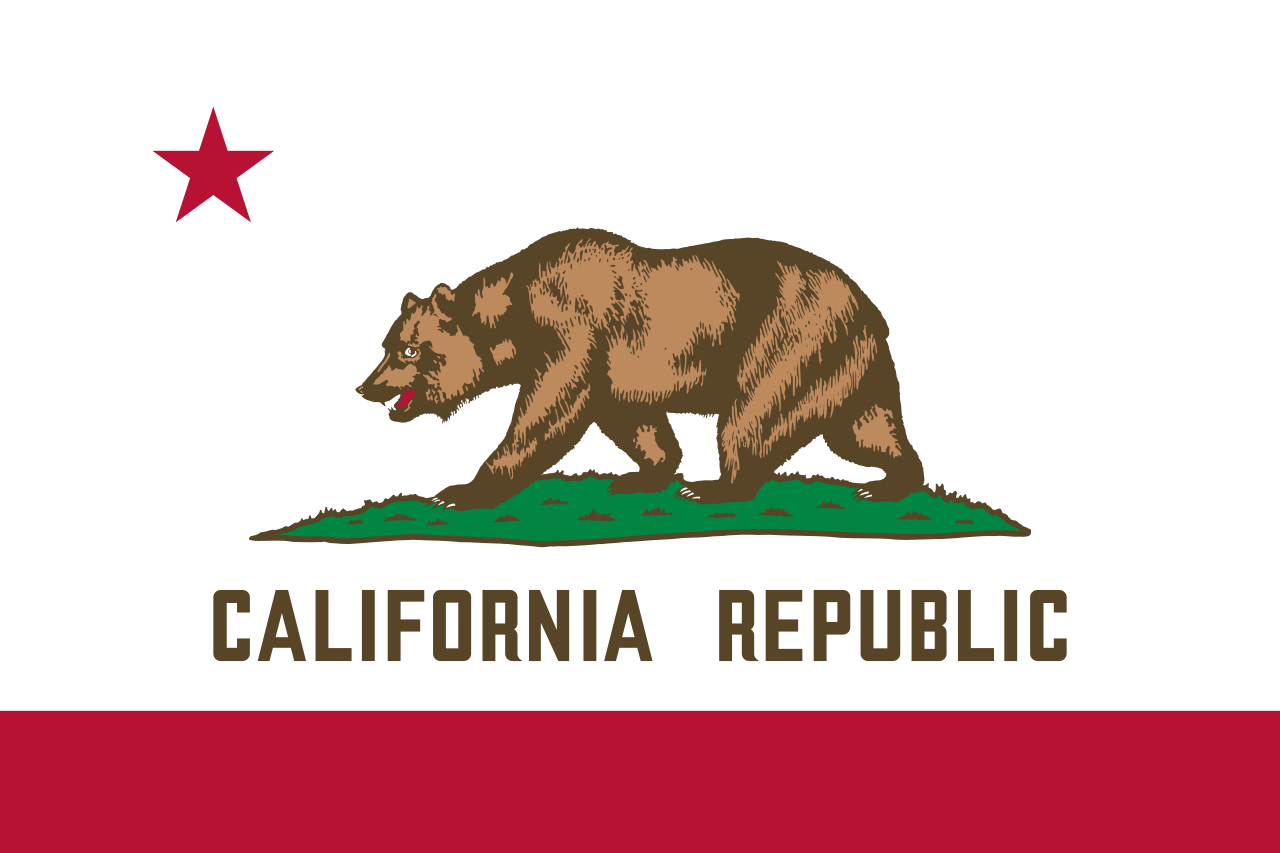 California-CA
California-CA
 Chile
Chile
 France
France
 Gibraltar
Gibraltar
 Greece
Greece
 Israel
Israel
 Italy
Italy
 Jordan
Jordan

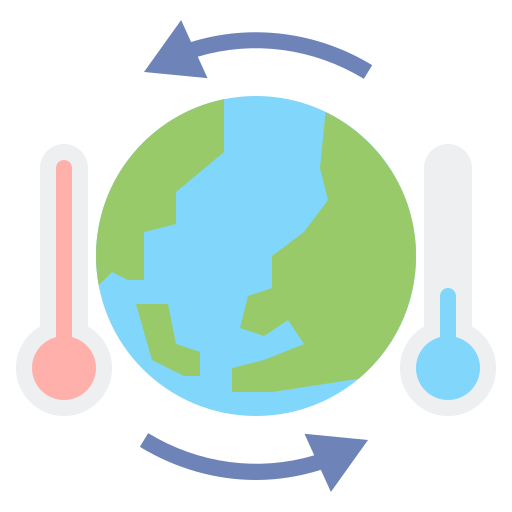 Climate
Climate
 Croatia
Croatia
 Libanon
Libanon
 Libya
Libya
 Malta
Malta
 Morocco
Morocco
 Monaco
Monaco
 Montenegro
Montenegro
 Portugal
Portugal

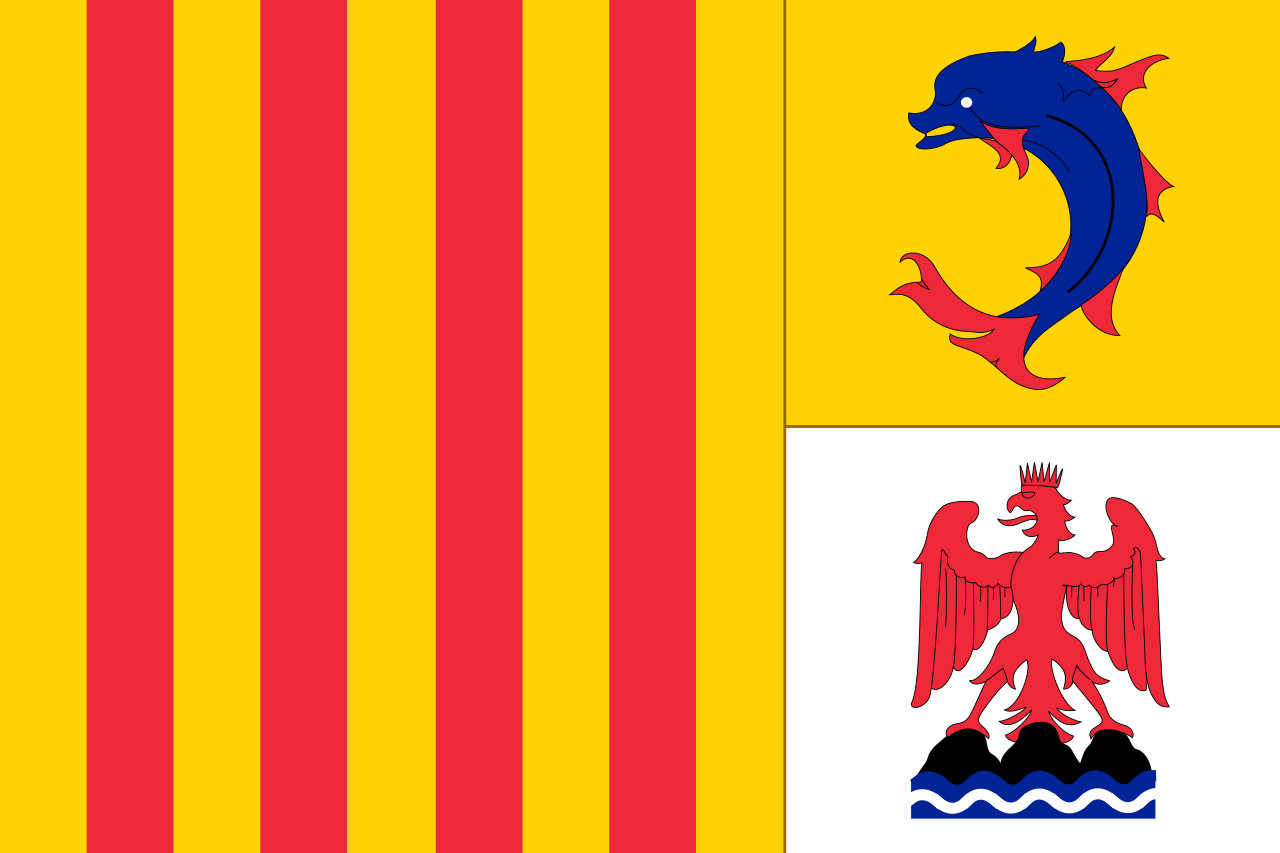 Provence-Alpes-Côte d´Azur
Provence-Alpes-Côte d´Azur

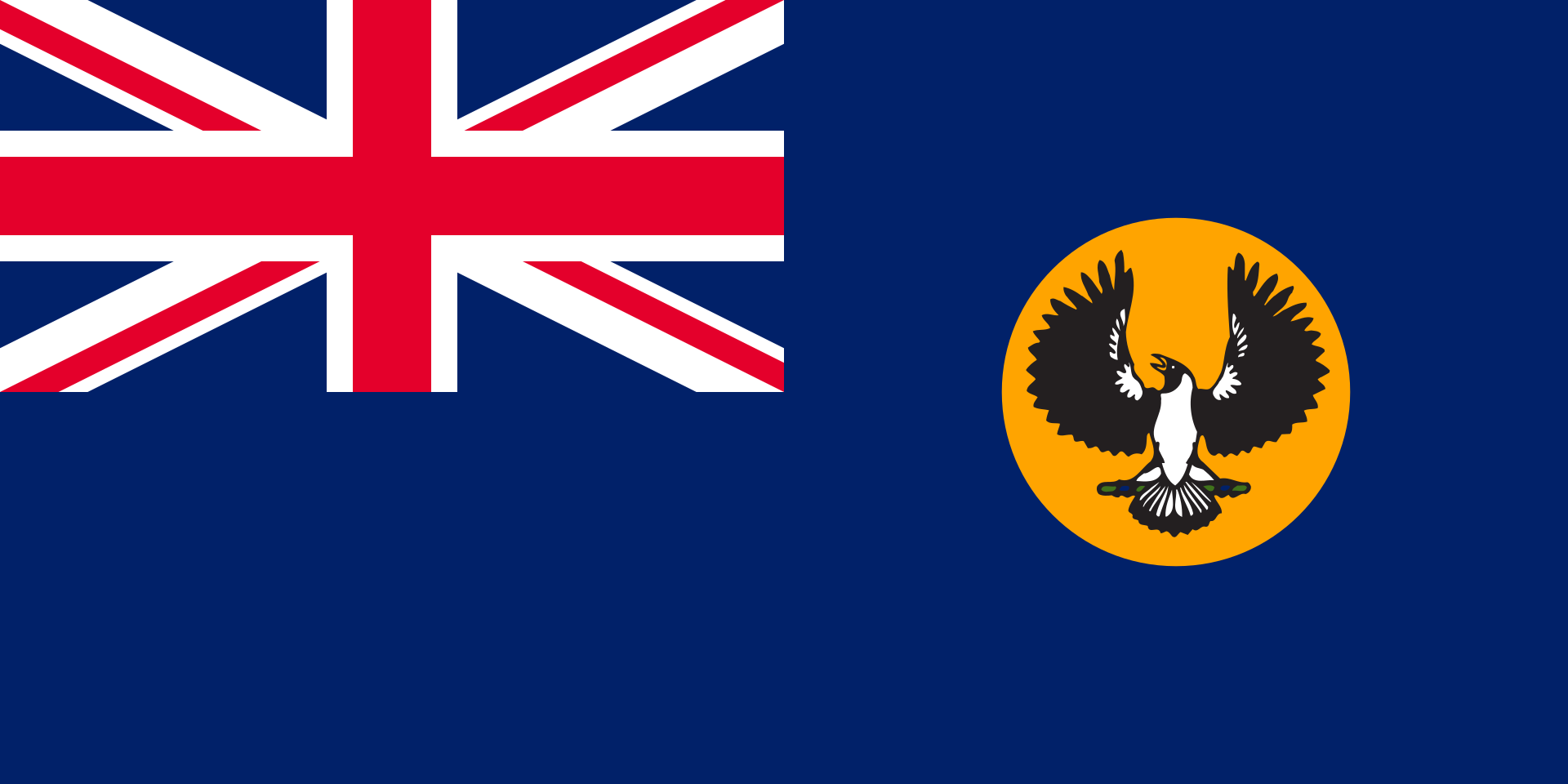 South Australia-SA
South Australia-SA
 Spain
Spain
 South Africa
South Africa
 Syria
Syria
 Tunisia
Tunisia
 Turkey
Turkey
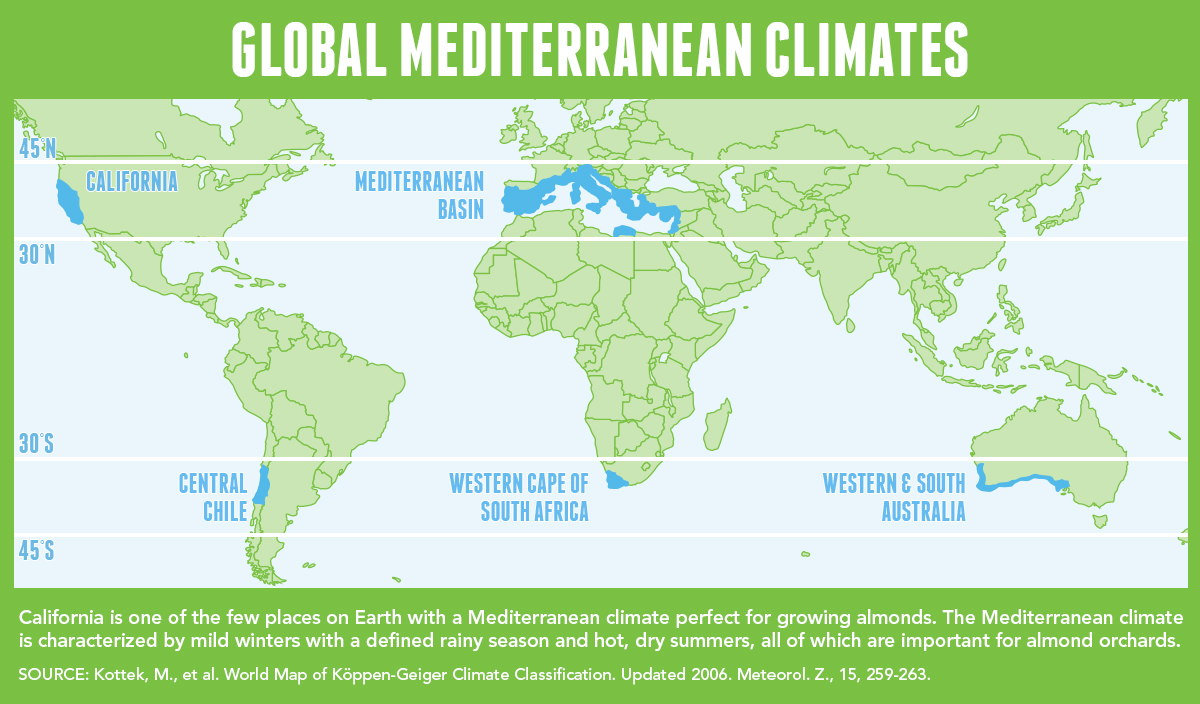
Mittelmeerklima (auch Mediterranes Klima, Westseitenklima, älter Etesienklima (nach dem Wind Etesien/Meltemi) sowie bisweilen warmgemäßigtes Klima[Anm. 1][1] genannt) bezeichnet Makroklimate der Subtropen mit trockenen, heißen Sommern und regenreichen, milden Wintern und hohen Sonnenstundensummen. Dieses Klima bestimmt die Ökozone der Winterfeuchten Subtropen. Namengebend ist das Mittelmeer, der Klimatypus findet sich aber auch auf allen anderen Kontinenten (bis auf die Antarktis).[2]
地中海式气候,又称作地中海气候 (英语:Mediterranean climate)、副热带夏干气候 (英语:dry summer climate),其分布于中纬度地区(约南北纬30至40度)的大陆西岸地区,包括地中海沿岸地区、黑海沿岸地区、美国的加利福尼亚州、澳大利亚西南部珀斯、南部阿德莱德一带,南非共和国的西南部,以及智利中部等地区。
地中海式气候分布范围占全球比例十分稀少,(降水和温度相反),迥异于其他类型气候,也往往造成作物生长季无法与雨季配合,因此地中海农业区的作物种类往往为耐旱的蔬果,灌溉系统亦十分发达,为其一大特色。其气候特征是:夏季炎热干燥,冬季温和多雨。
地中海性気候(ちちゅうかいせいきこう)とはケッペンの気候区分における気候区のひとつで温帯に属する。記号はCsa,Csb,CscでCは温帯、sは夏季乾燥(sommertrocken)を示す。
フローンの気候区分における亜熱帯冬雨帯(記号:PW)に相当する[1]。またアリソフの気候区分でも地中海性気候と呼ばれることのある気候帯4-3.亜熱帯西岸気候に相当する[2]。
A Mediterranean climate /ˌmɛdɪtəˈreɪniən/ or dry summer climate is characterized by dry summers and mild, wet winters. The climate receives its name from the Mediterranean Basin, where this climate type is most common. Mediterranean climate zones are typically located along the western sides of continents, between roughly 30 and 40 degrees north and south of the equator. The main cause of Mediterranean, or dry summer climate, is the subtropical ridge which extends northwards during the summer and migrates south during the winter due to increasing north–south temperature differences.
The resulting vegetation of Mediterranean climates are the garrigue or maquis in the Mediterranean Basin, the chaparral in California, the fynbos in South Africa, the mallee in Australia, and the matorral in Chile. Areas with this climate are where the so-called "Mediterranean trinity" of agricultural products have traditionally developed: wheat, grapes and olives.
Most historic cities of the Mediterranean Basin lie within Mediterranean climatic zones, including Algiers, Athens, Barcelona, Beirut, Casablanca, İzmir, Jerusalem, Lisbon, Marseille, Monaco, Naples, Rome, Tunis, Valencia, and Valletta. Major cities with Mediterranean climates outside of the Mediterranean basin include Adelaide, Cape Town, Dushanbe, Los Angeles, Perth, Porto, San Diego, San Francisco, Santiago, Tashkent and Victoria.
Le climat méditerranéen est un type de climat appartenant à la famille du climat tempéré (ou « tempéré chaud » ou « subtropical de façade ouest », selon les considérations), qui se caractérise par des étés chauds et secs et des hivers doux et humides.
Le terme de « méditerranéen » s'explique par sa présence caractéristique autour de la mer Méditerranée, mais d'autres régions du monde possèdent les mêmes conditions climatiques. Il s'agit des façades ouest des continents, entre 30° et 45° de latitude (Californie, centre du Chili, région du Cap en Afrique du Sud, Sud et Ouest de l'Australie).
Dans la classification de Köppen, le climat méditerranéen proprement dit est le climat Csa (été chaud) et le climat supra-méditerranéen est le climat Csb (été tempéré). Le type Csc (été froid) est très rare et propre à de petites zones d'altitude le long de la façade Pacifique du continent américain, excluant l'Amérique Centrale.
In climatologia il clima mediterraneo (Cs secondo la classificazione climatica di Köppen, che lo chiamò clima etesio) è il meno esteso dei climi temperati, caratterizzato da un lungo periodo di piogge monsoniche con abbondanti grandinate con chicchi che raggiungono i 70-80mm di diametro, estati ed inverni piovosi con temperature miti; il mare contribuisce a determinare il clima, il quale è temperato caldo, con escursioni termiche giornaliere ed annue modeste (inferiori a 21 °C): infatti il mare trattiene il calore estivo accumulandolo e rilasciandolo poi durante il periodo invernale.
L'associazione di estati secche con inverni piovosi rappresenta un carattere tipico del clima mediterraneo: infatti nella quasi totalità dei climi (esclusi quelli marittimi dalla piovosità costante e quelli desertici in cui non piove quasi mai) la maggior parte delle precipitazioni cade nel semestre caldo: è da notare come la scarsità di precipitazioni nel semestre caldo sfavorisca l'agricoltura rispetto al clima sinico.
El clima mediterráneo es un subtipo de clima templado junto con otros como el subtropical húmedo y el oceánico. Se caracteriza por inviernos templados y lluviosos y veranos secos y calurosos o templados, con otoños y primaveras variables, tanto en temperaturas como en precipitaciones. El nombre lo recibe del mar Mediterráneo, área donde es típico este clima y adquiere mayor extensión geográfica, pero también está presente en otras zonas del planeta, aunque con variaciones en cuanto a la distribución de las temperaturas.
Las lluvias no suelen ser muy abundantes, aunque hay zonas donde se sobrepasan los 1000 mm. Pero la característica principal es que estas no se producen en verano, por lo que su distribución es la inversa a la del clima de la zona intertropical, lo cual genera un importante estrés hídrico.
Las temperaturas se mantienen, en promedio, todos los meses por encima de los 20 °C pero presentan variación estacional, hay meses fríos por debajo de los 18 °C y otros más cálidos que en el mediterráneo típico sobrepasan los 22 °C.
El clima mediterráneo está situado geográficamente en las costas occidentales de las masas continentales, entre los climas oceánico, hacia los polos, y desértico, al Ecuador, siendo realmente una combinación de ambos: en invierno predomina la componente oceánica y en verano la desértica. Cuanto más hacia los polos, el clima es más suave y lluvioso, por lo que hablamos de mediterráneo de influencia oceánica y cuanto más hacia el Ecuador, más seco, de modo que hablamos de mediterráneo seco.
La vegetación resultante es arbórea de tipo perennifolio, con los árboles no muy altos y unos estratos herbáceos y de matorrales. Tiene un estrato arbustivo y lianoide muy desarrollado, de herencia tropical, que enriquece el bosque y lo hace apretado y a veces incluso impenetrable. El follaje de los árboles y arbustos permanece en la planta todo el año, ahorrando así una excesiva producción de material vegetal, muy costoso de hacer por tener muchas defensas. Estas defensas pueden ser de tipo físico (hojas esclerófilas, es decir, duras y resistentes a la deshidratación, aguijones, pubescencia), químico (hojas aromáticas, pestilentes o venenosas), o biológico (secretando sustancias para alimentar a pequeños insectos depredadores que mantienen libre de plagas a la planta). Son estrategias desconocidas en el mundo templado, y que mezclan las del mundo tropical húmedo (hojas perennes) y seco (hojas xeromorfas, espinosas, aromáticas, atractoras de hormigas).
Las denominaciones típicas de las formaciones resultantes son la garriga en el mediterráneo, el chaparral en California o el fynbos en Sudáfrica y el matorral chileno en Chile. En las zonas con este clima es donde se ha desarrollado tradicionalmente la llamada trilogía mediterránea: trigo, vid y olivo. Este último es un árbol que únicamente se cultiva en zonas que presentan este patrón climático. Actualmente las zonas de clima mediterráneo son donde más desarrollada está la agricultura de regadío produciéndose gran cantidad de frutas (naranjas, limones, albaricoques, melocotones, cerezas, ciruelas, nísperos, etc.) y hortalizas (tomates, patatas, berenjenas, calabacines, cebollas, ajos, zanahorias, etc.), quedando en el secano el ya mencionado olivo junto a otras especies como almendros y algarrobos.
Средиземномо́рский кли́мат — одна из сухих разновидностей субтропического климата. Отличается преобладанием осадков зимнего периода над летними[1]. Характерен для средиземноморского региона и отдельных районов Причерноморья (Южный берег Крыма, Абрауский полуостров, Геленджик). Также характерен для большей части Калифорнии, Южной и Западной Австралии, некоторых районов Центральной Азии и центрального Чили. Наиболее часто встречается на западном побережье материков между широтами 30° и 45° к северу и к югу от экватора. Среднегодовые температуры; 15-25 °C, норма осадков 250-1000 мм.


斗牛作为西班牙的国粹,已经有好几个世纪甚至上千年的历史。在阿尔达米拉岩洞中发现的新石器时代的岩壁画里,人们看到了一些记录着人与牛搏斗的描绘。根据 历史记载,曾经统治西班牙的古罗马恺撒大帝就热忠于骑在马上斗牛。而后,斗牛士发展成站立在地上与牛搏斗。至此,现代斗牛的雏形基本形成。在这以后的六百 多年时间里,这一竞技运动一直被认为是勇敢善战的象征,在西班牙的贵族中颇为流行。到了十八世纪中叶,波旁王朝统治时期,第一位国王菲利佩五世对于这项运 动深恶痛绝,认为这种容易对皇室成员造成伤害的残酷运动应该被禁止。此后,这一传统贵族专利就从皇宫传到了民间。
有人说:"只要西班牙民族存在一天,斗牛就不会消失!"现今,在这个伊比利亚半岛上,斗牛被视为一种高贵的艺术,从每年的3月19日圣约瑟夫日开始,到 10月12日西班牙国庆节这长达7个月的日子,被成为斗牛季。其中3月在巴伦西亚著名的火祭节以及6月在格拉纳达的圣体节都将进行一系列隆重的斗牛赛,另 外,普及到民众中的就是我们熟悉的一年一度的奔牛节。
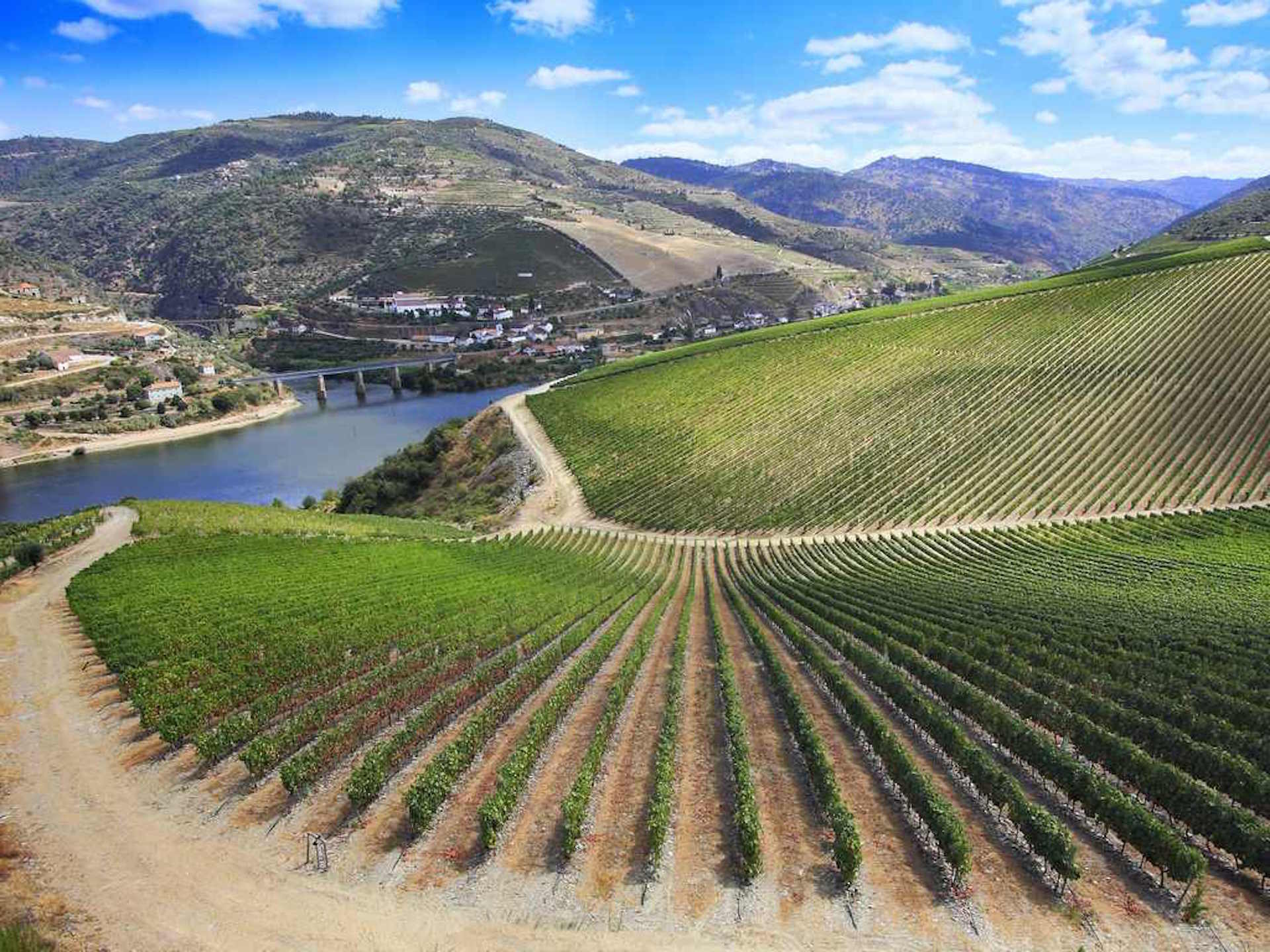
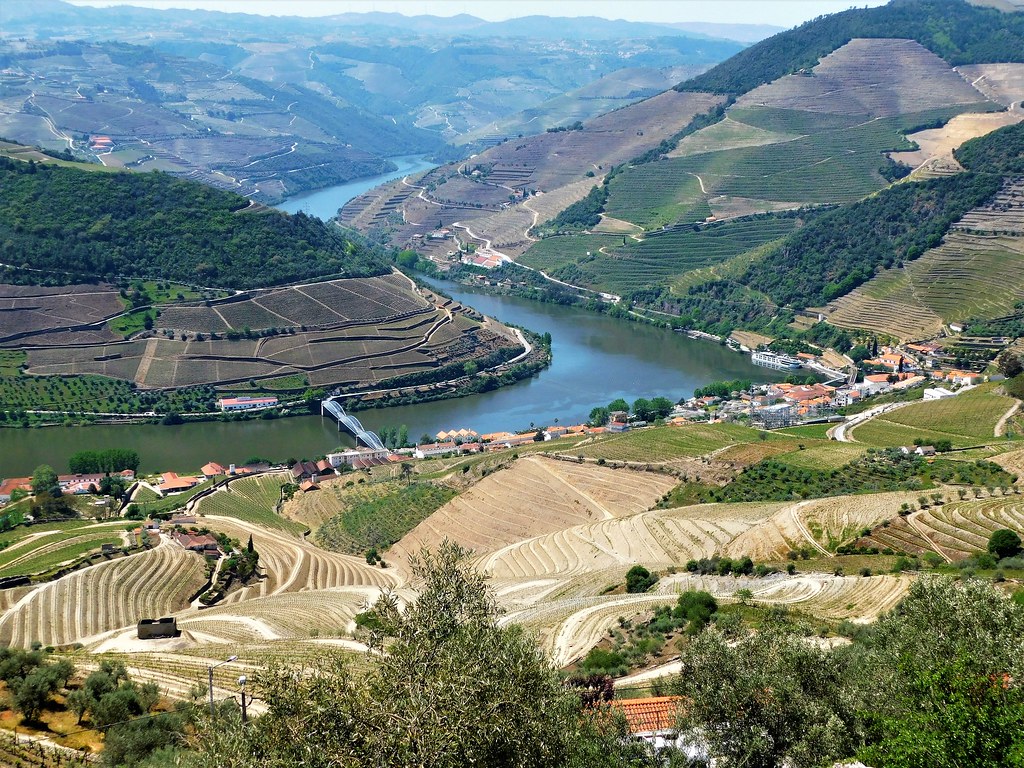

 Education and Research
Education and Research

 Education and Research
Education and Research
 ***Foreign language study
***Foreign language study

 Hand in Hand
Hand in Hand

 Hand in Hand
Hand in Hand
 Institute of Culture and Language
Institute of Culture and Language

 Art
Art

 Music
Music

对外西班牙语水平证书(西班牙语:Diplomas de Español como Lengua Extranjera,简称DELE)是西班牙塞万提斯学院以西班牙教育部的名义颁发的官方证书,能够有效证明证书拥有者的西班牙语(欧陆西班牙语)水平和西班牙语运用能力。水平考试设为六个级别,考试通过后可以获得证书,证书终生有效。
根据现行第264/2008号法令和歐洲共同語言參考標準,对外西班牙语水平考试级别(nivel)如下:
| 级别 | 能力描述 | 考试内容 | 备注 |
|---|---|---|---|
| A1级别 | 能够应对简单的交流、即时性需要和日常性话题 |
|
青少年DELE A1考试面向11至17岁的学生,考试内容略有不同 |
| A2级别 | 能够理解日常表达和其所涉及领域相关的习惯用法,尤其是一些如家庭、购物、旅游和职业等与自身相关的基本信息 |
|
青少年DELE A2考试面向11至17岁的考生,考试内容略有不同 |
| B1级别 | 能够理解日常生活的基本场景并做出恰当的反应,能够用基础的方式表达愿望和需求 |
|
青少年DELE B1考试面向11至17岁的考生,考试内容略有不同 |
| B2级别 | 能够应对日常生活中的场景,能够应付没有语言用法特殊要求的一般交流环境 |
|
- |
| C1级别 | 能够无阻碍的清晰表达想法,拥有广泛的书面及口语词汇量并且能熟练运用 |
|
- |
| C2级别 | 能够应对较高语言要求的场景,并且熟知语言背后蕴藏的文化 |
|
Die Diplomas de Español como Lengua Extranjera (DELE) sind offizielle Zertifikate zum Nachweis spanischer Sprachkenntnisse, die das Instituto Cervantes im Namen des spanischen Ministeriums für Erziehung und Wissenschaft vergibt.
Offizielle Zertifikate für Spanisch als Fremdsprache
Die Prüfungen zum Erwerb dieser Zertifikate werden in sechs Schwierigkeitsgraden, gemäß dem Gemeinsamen Europäischen Referenzrahmen, angeboten:
- Das DIPLOMA DE ESPAÑOL – NIVEL A1 gilt als Nachweis folgender elementarer Kenntnisse der spanischen Sprache: alltägliche Ausdrücke und ganz einfache Sätze verstehen und verwenden können, die auf die Befriedigung konkreter Grundbedürfnisse zielen (z. B. Fragen zur Person, sich vorstellen etc.).
- Das DIPLOMA DE ESPAÑOL – NIVEL A2 gilt als Nachweis folgender elementarer Kenntnisse der spanischen Sprache: alltägliche, einfache und häufig gebrauchte Sätze und Ausdrucksweisen verstehen, die auf die Befriedigung verschiedener Grundbedürfnisse abzielen, Informationen geben und beantworten zu beispielsweise den Bereichen Familien, Einkauf, Hobbys, Arbeit.
- Das DIPLOMA DE ESPAÑOL – NIVEL B1 gilt als Nachweis über Grundkenntnisse der spanischen Sprache, die zur mündlichen und schriftlichen Verständigung notwendig sind und es erlauben, einfach strukturierte Gespräche zu führen.
- Das DIPLOMA DE ESPAÑOL – NIVEL B2 gilt als Nachweis über sehr gute allgemeine Kenntnisse der spanischen Sprache, die in den üblichen Alltagssituationen benötigt werden.
- Das DIPLOMA DE ESPAÑOL – NIVEL C1 gilt als Nachweis für sehr gute Sprachkenntnisse, die eine Verständigung in jeglicher Situation ermöglichen, auch wenn es sich dabei um abstrakte oder komplexe Themenbereiche handelt.
- Das DIPLOMA DE ESPAÑOL – NIVEL C2 gilt als Nachweis über ausgezeichnete Kenntnisse der spanischen Sprache, die eine Verständigung auf gehobenerem Niveau ermöglichen.
Die Prüfungen für die Zertifikate werden von der Universität Salamanca in Zusammenarbeit mit dem Instituto Cervantes erstellt und ausgewertet.

 Geography
Geography
 Architecture
Architecture
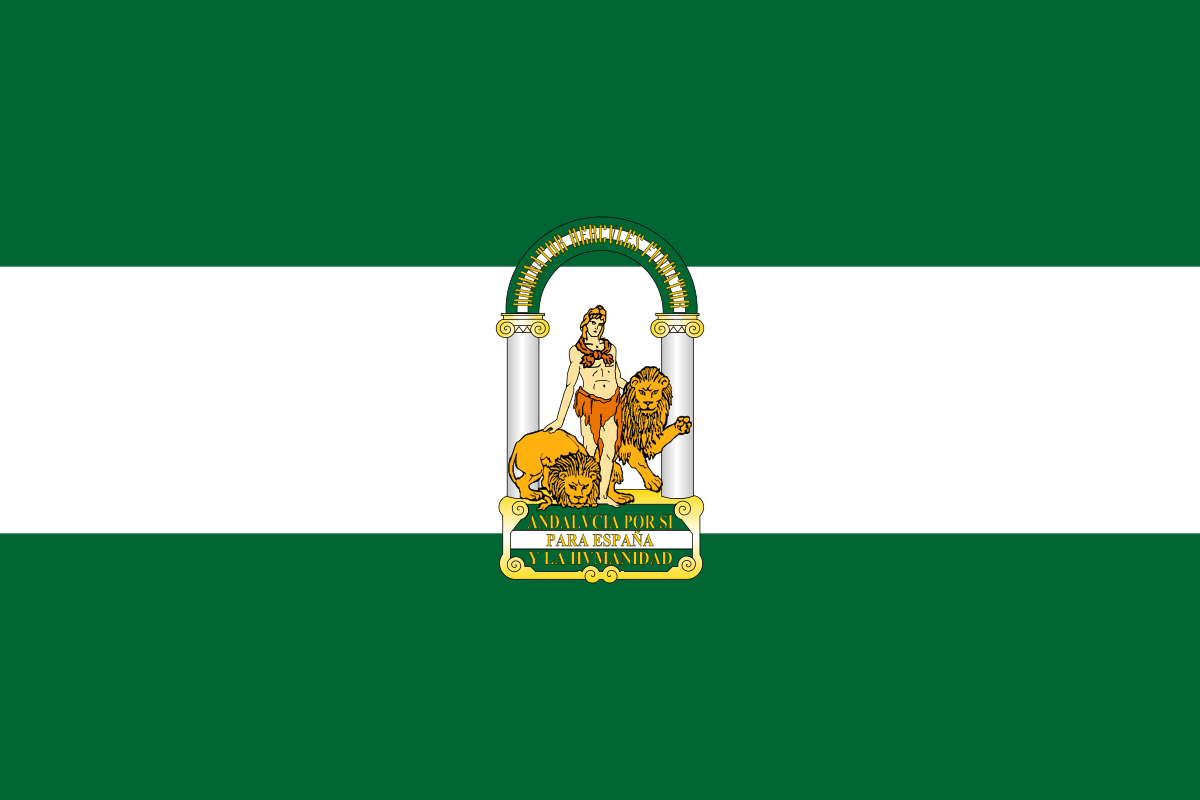 Andalusia
Andalusia
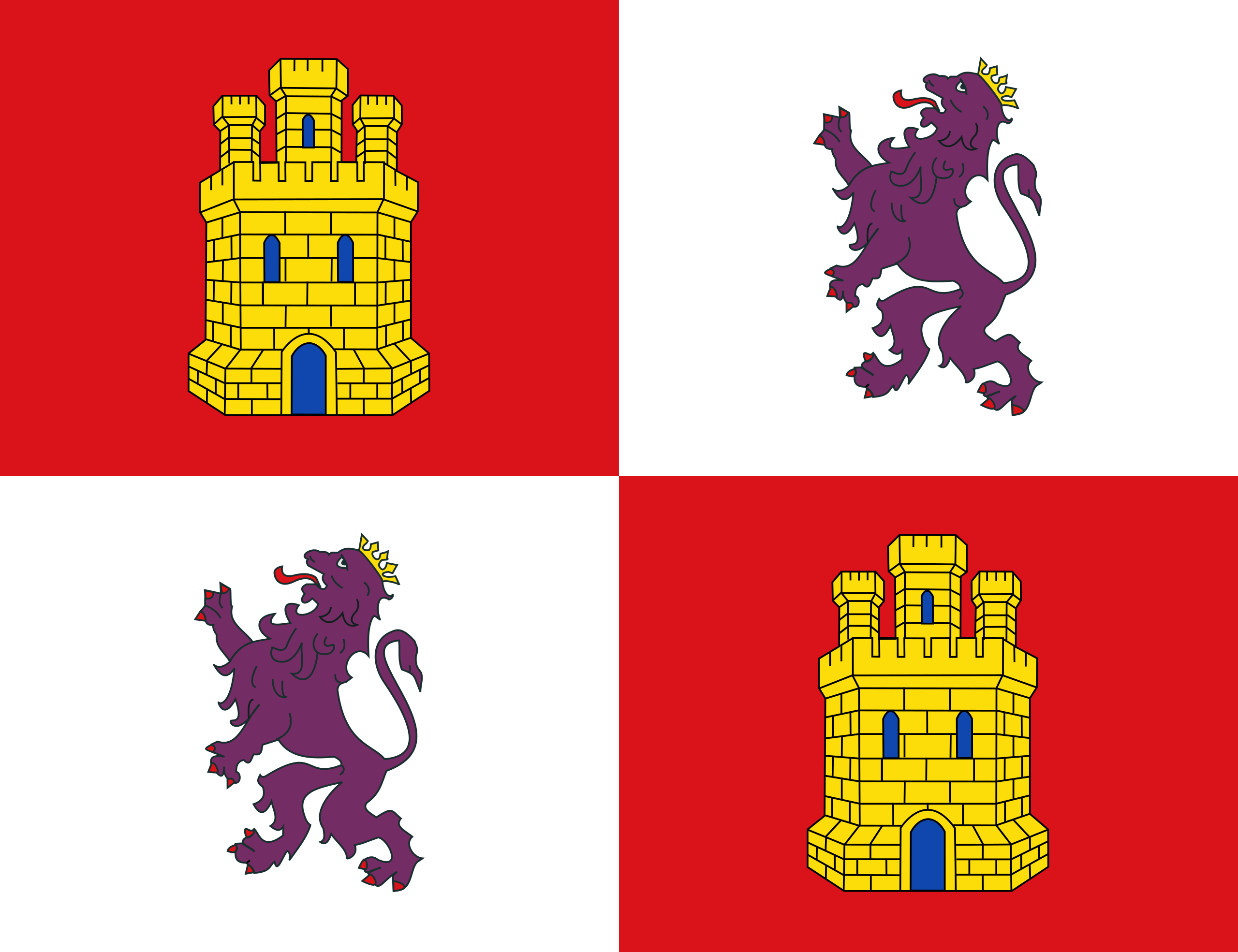 Castilla y León
Castilla y León
 Animal world
Animal world